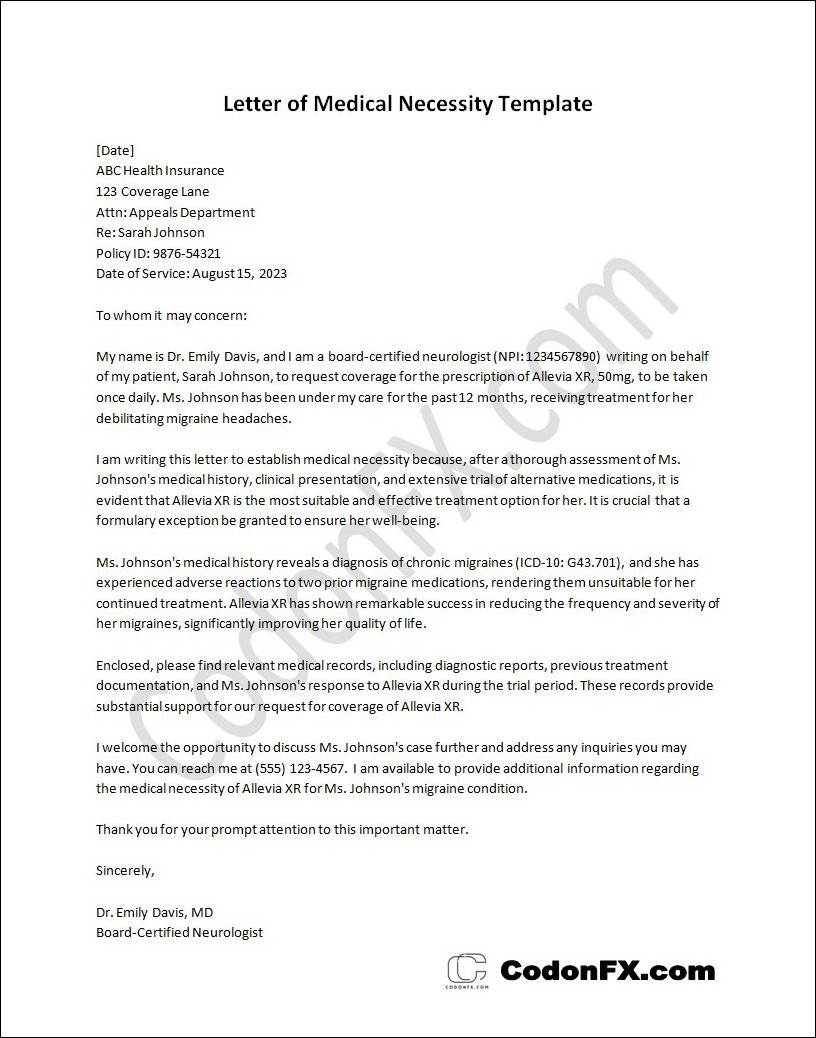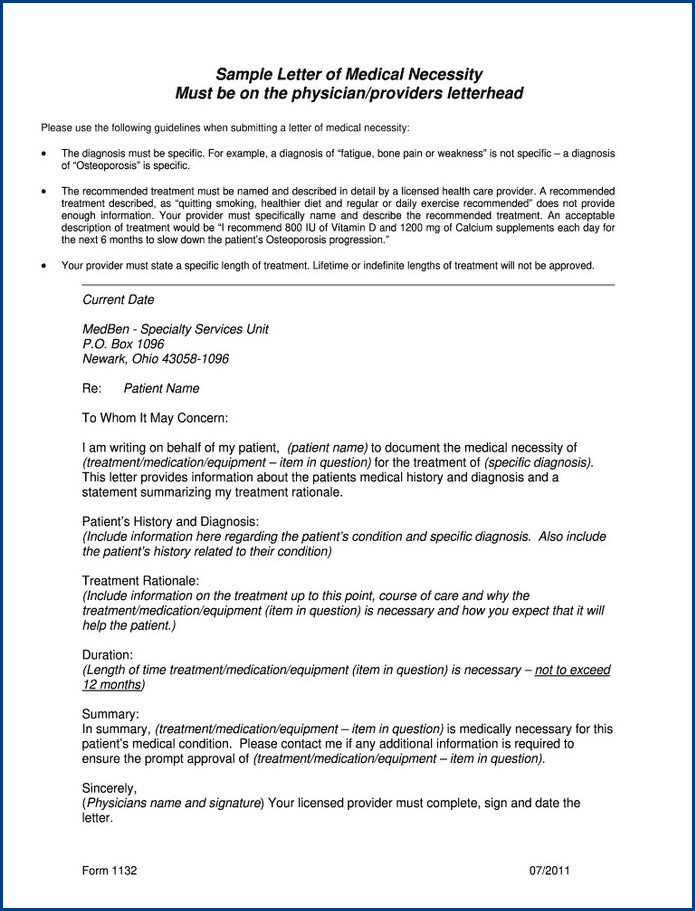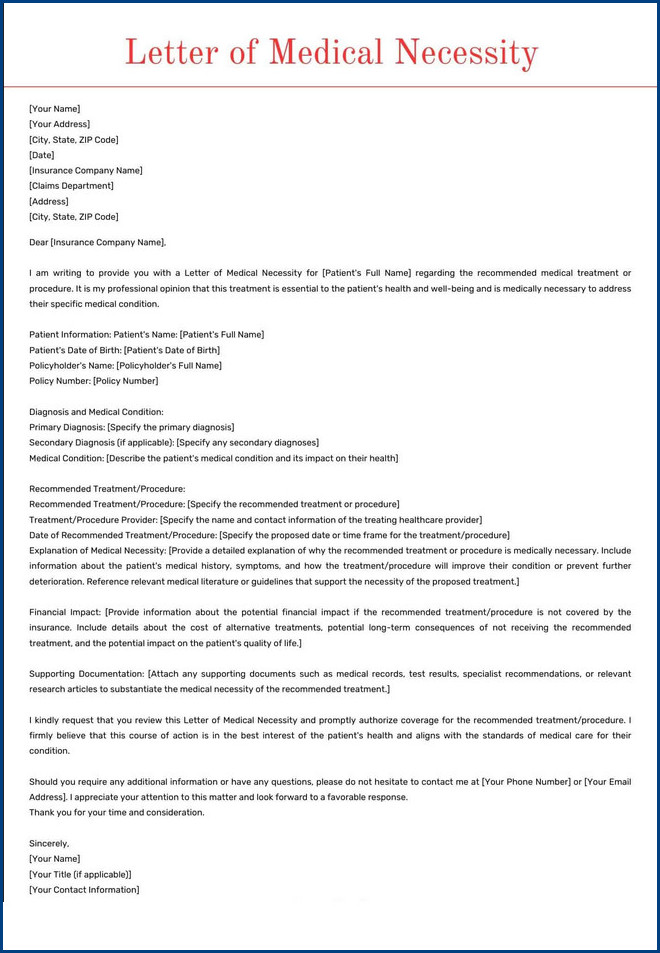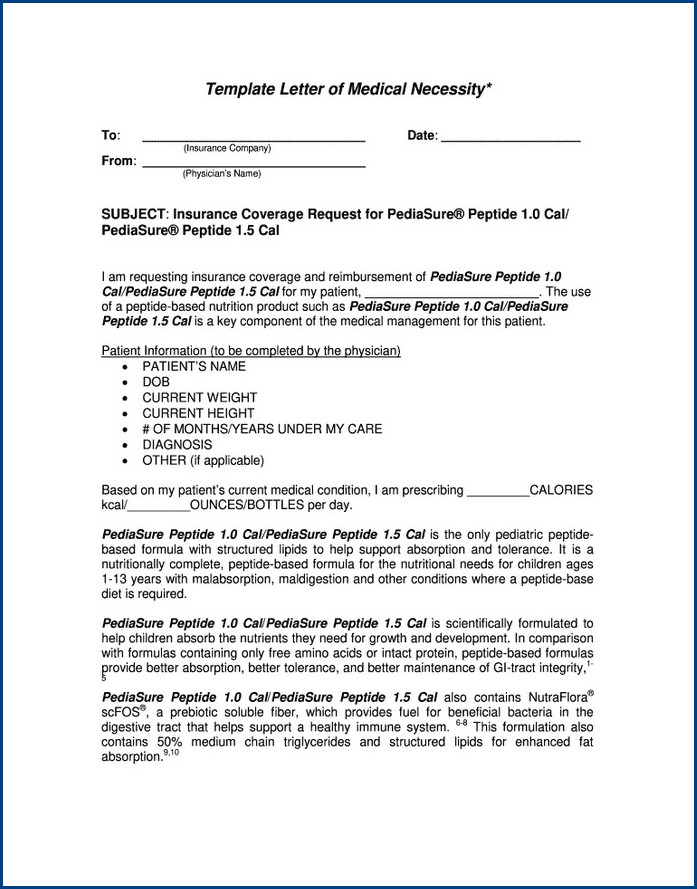
What is a letter of medical necessity?
A letter of medical necessity (LMN) is a document that is typically written by a healthcare provider to support the need for a specific medical treatment or service. It outlines the patient’s medical condition, the recommended treatment, and the reasons why it is medically necessary. The purpose of this letter is to provide justification to insurance companies, government agencies, or other third-party payers for coverage or reimbursement of the requested treatment.
The benefits of having a letter of medical necessity are numerous.
- It helps ensure that patients receive the appropriate care they need by providing evidence-based information about their condition and treatment options.
- This document also serves as a communication tool between the healthcare provider and the payer, facilitating the approval process for coverage or reimbursement.
- Having a well-written LMN can help expedite the approval process, reducing delays in receiving necessary medical treatments or services.
How long does a letter of medical necessity last?
Typically, a letter of medical necessity remains valid for one year from the date it is written. However, it is important to note that this timeframe can be subject to change depending on the requirements of insurance providers or healthcare facilities.
It is advisable to check with the respective parties involved to ensure that you are aware of any specific time limitations that may apply to your situation. By staying informed about the duration of validity, you can ensure that your letter of medical necessity is up-to-date and can be used effectively when needed.
It is crucial to understand that the duration of validity for a letter of medical necessity is not set in stone. Various factors, such as changes in medical conditions or treatment plans, may necessitate the need for an updated letter. Additionally, insurance providers or healthcare facilities may have their own guidelines for the acceptable timeframe of a letter.
Therefore, it is essential to regularly review and update your letter of medical necessity to ensure its accuracy and relevance. By maintaining an updated letter, you can facilitate the smooth processing of insurance claims, approvals for medical equipment or services, and overall communication with healthcare providers.




How do you write a letter of medical necessity?
To write an effective letter of medical necessity, consider the following steps:
- Gather relevant medical information: Before writing the letter, collect all pertinent medical records, test results, and doctor’s notes that support the need for the treatment or service. This information should include a clear diagnosis, the patient’s medical history, and any previous attempts at other treatments.
- Start with a clear and concise introduction: Begin the letter by stating the patient’s name, date of birth, and insurance policy number. Clearly explain the purpose of the letter, which is to request coverage for a specific treatment or service that is deemed medically necessary.
- Provide detailed medical justification: In the body of the letter, provide a comprehensive explanation of the medical condition, highlighting the symptoms, severity, and potential consequences if the treatment or service is not provided. Use specific medical terminology and reference the supporting documents to strengthen your case.
- Include supporting letters or recommendations: If applicable, attach letters from other healthcare professionals who support the need for the treatment or service. These letters can include specialists’ opinions, therapists’ recommendations, or alternative healthcare providers’ suggestions.
- End with a strong conclusion and contact information: Wrap up the letter by summarizing the importance of the requested treatment or service and expressing gratitude for the insurance company’s prompt attention. Provide your contact information, including a phone number and email address, in case the insurance company needs further clarification or additional documentation.
Writing a letter of medical necessity requires careful attention to detail and a thorough understanding of the patient’s medical condition. By following these steps and providing compelling medical justification, patients can increase their chances of obtaining insurance coverage for necessary treatments and services.
Letter of Medical Necessity Template | Word – Download